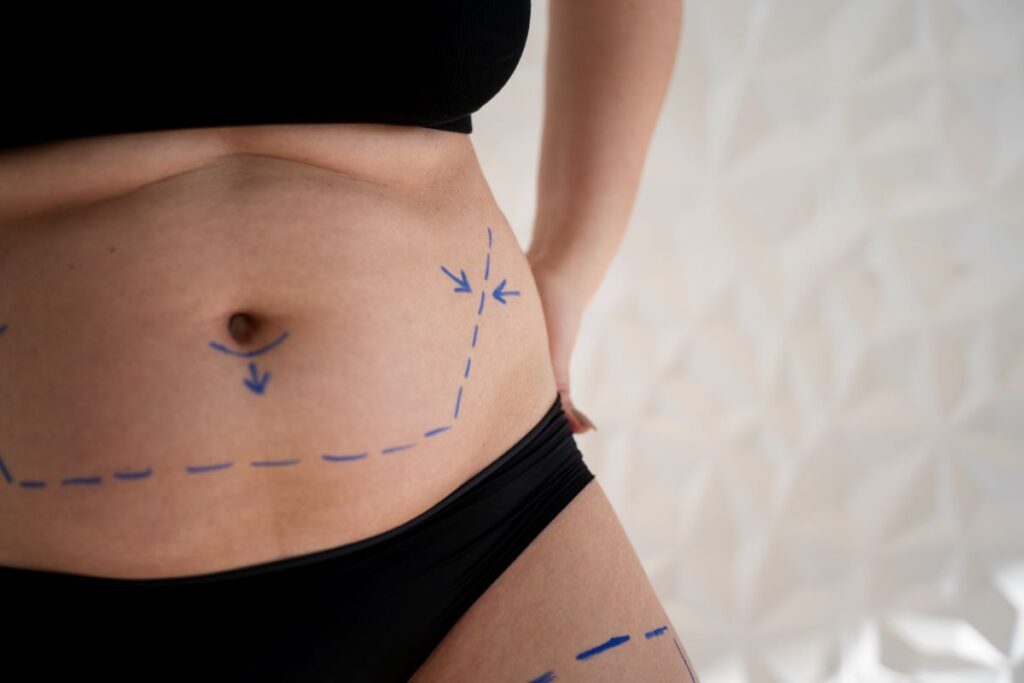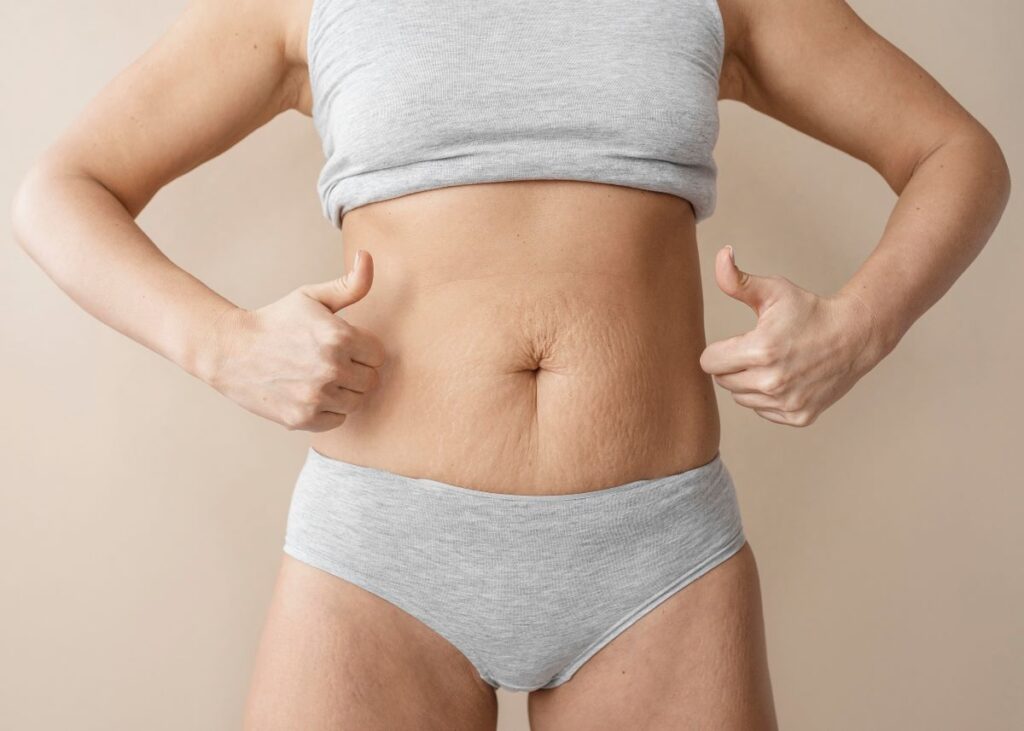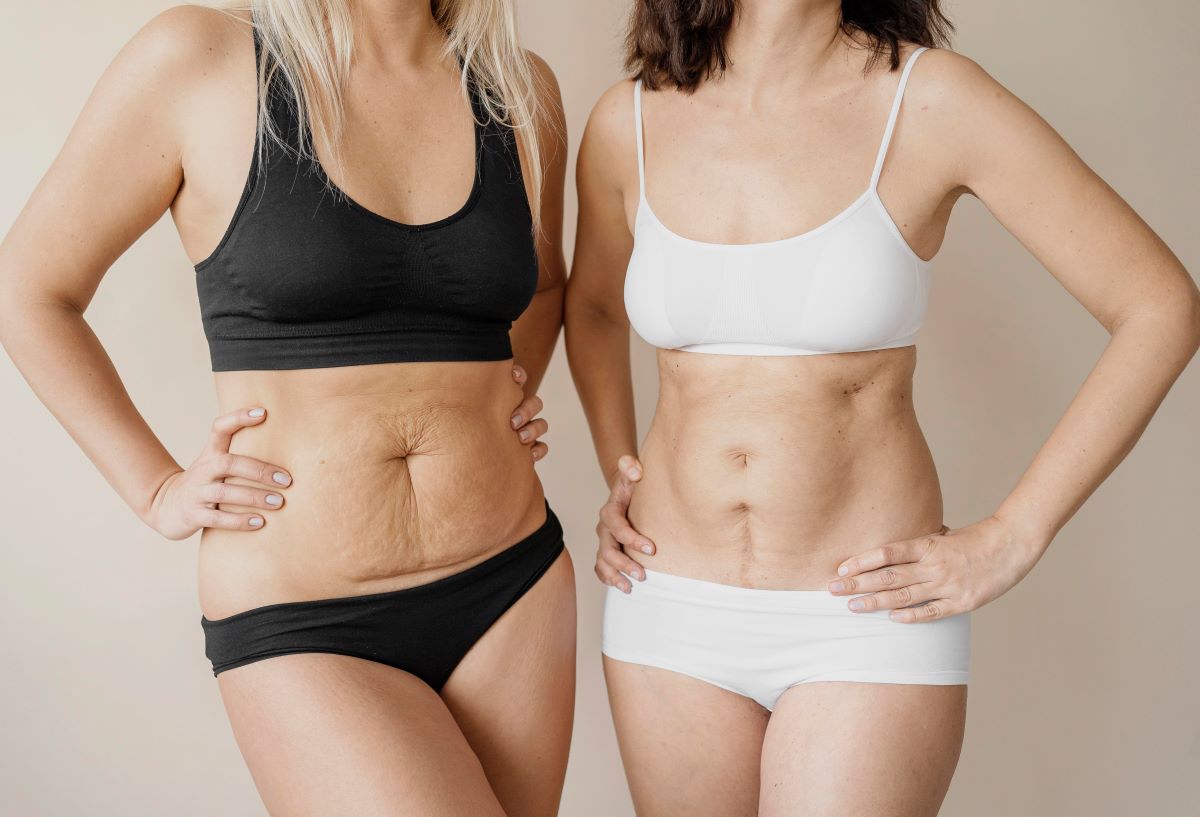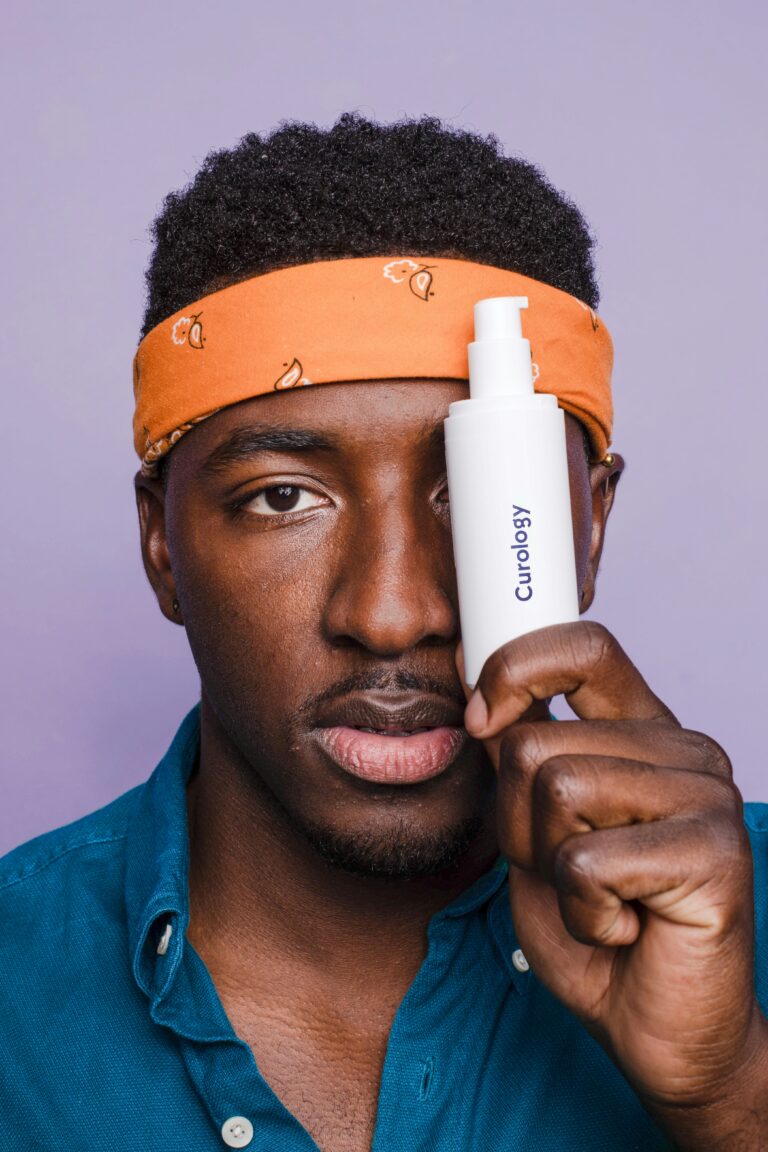Discover the Power of Tummy Tuck Before and After Results
A stomach tuck, also known as an abdominoplasty, is a popular cosmetic procedure that gives the abdomen a smoother, more toned appearance by removing excess skin and fat. Whether you’re considering this treatment to achieve your desired aesthetic, to repair your body after a significant weight loss, or to repair your body after giving birth, it’s crucial to know what to anticipate from a tummy tuck before and after.
We’ll go over the transformational process in this guide, along with the healing schedule, expected outcomes, and crucial advice to help you get the best possible conclusion.
What Is a Tummy Tuck?
A surgical treatment called an abdominoplasty, or “tummy tuck,” is intended to improve the look of the abdomen by tightening the muscles underneath and eliminating extra skin and fat.
Many people who have undergone major weight loss, are pregnant, or are elderly are candidates for this procedure since these conditions can all result in drooping, loose skin and weakening abdominal muscles. What may not be possible with diet and exercise alone is a flatter, tighter stomach that may be restored with a belly tuck.
In order to reach the abdominal muscles and remove extra skin and fat, a plastic surgeon creates an incision during the surgery, usually from hip to hip slightly above the pubic region. To guarantee a natural appearance, the surgeon could occasionally further realign the belly button. There are several varieties of stomach tucks, from full tummy tucks that cover the whole abdominal region to mini-tummy tucks that just target the lower abdomen.
Knowing what to expect before and after a stomach tuck is essential to making the choice to have this operation done. Patients might anticipate a significant change in the form and appearance of their stomach. People may have trouble with loose, hanging skin or trouble-some fat pockets that don’t go away with exercise or diets prior to the operation.
Patients usually perceive a more streamlined and toned abdomen area after the treatment, which helps to increase their self-esteem and confidence.
It’s important to note that while a tummy tuck can deliver impressive cosmetic results, it is not a weight-loss procedure. Instead, it is best suited for individuals who are close to their ideal weight but seek to address specific aesthetic concerns related to excess skin and muscle laxity.

Choosing the Right Tummy Tuck
It’s important to realize that there are several kinds of procedures for stomach tucks, each with a distinct set of requirements and objectives. Your “tummy tuck before and after” outcomes will be greatly impacted by the sort of procedure you select. Let’s dissect the primary categories:
1. Full Tummy Tuck
A traditional abdominoplasty, commonly called a full tummy tuck, is the most involved treatment. The whole abdominal area, including the area above and below the belly button, is the focus of this procedure. The surgeon creates a horizontal incision between the hips, tightens the abdominal muscles, and trims away any excess skin and fat. The belly button is typically repositioned to give the illusion of being more natural.
Tummy Tuck Before and After Impact: Patients who have a complete stomach tuck frequently experience diastasis recti, or major muscle separation, along with severe skin sagging following pregnancy or weight reduction. Following the procedure, their abdomen becomes firmer and flatter, and the shape of their waist is enhanced.
2. Mini Tummy Tuck
A mini tummy tuck is less invasive than the full version, focusing only on the area below the belly button. It’s ideal for individuals with minimal excess skin and muscle weakness in the lower abdomen. The incision is smaller, and there is no need to reposition the belly button. This option is often favored by those who are already in good shape but want to target a small amount of loose skin or fat in the lower abdominal area.
Tummy Tuck Before and After Impact: For those with slight abdominal concerns, a mini tummy tuck provides a subtle yet noticeable improvement. The lower belly becomes flatter and more toned, with less downtime and a smaller scar compared to a full tummy tuck.
3. Extended Tummy Tuck
An extended tummy tuck goes beyond the abdominal area, targeting the flanks or love handles as well. This option is ideal for individuals who have undergone massive weight loss and need more comprehensive body contouring. The incision extends around the hips to address excess skin and fat on the sides of the waist.
Tummy Tuck Before and After Impact: Patients with significant skin laxity around the abdomen and waist see the most dramatic results with an extended tummy tuck. Their midsection is transformed, with a tighter, more streamlined appearance not just in the abdomen but also in the sides.
4. Fleur-de-Lis Tummy Tuck
This advanced procedure is designed for individuals with extensive skin excess, often following extreme weight loss. The surgeon makes both a vertical and horizontal incision in the shape of an inverted “T,” allowing for more extensive skin removal and tightening. The belly button is also repositioned.
Tummy Tuck Before and After Impact: Those who undergo a fleur-de-lis tummy tuck often experience the most drastic transformation, as this technique targets excess skin across both the horizontal and vertical planes. Post-surgery, the results reveal a much more defined waistline and abdomen.
5. Tummy Tuck with Liposuction
Combining a stomach tuck with liposuction results in a more sculpted and contoured appearance. While a stomach tuck eliminates extra skin and tones muscles, liposuction targets troublesome fat deposits in places like the waist and hips that a tummy tuck might not be able to reach.
Tummy Tuck Before and After Impact: Patients opting for this combination often achieve more precise body sculpting results, with improved overall body contours and a slimmer, more toned appearance.

The Financial Side of Transformation
The kind of procedure, the experience of the surgeon, the patient’s location, and any post-operative therapies can all have a significant impact on the total cost of a stomach tuck surgery. Planning and budgeting require an understanding of the possible expenses related to a stomach tuck, particularly because insurance frequently does not cover the surgery.
1. Average Cost of Tummy Tuck
On average, a tummy tuck surgery can cost anywhere from $6,000 to $12,000. This price range typically includes the surgeon’s fee, anesthesia, and operating facility costs. However, additional factors such as pre-operative tests, post-operative care, and prescription medications can affect the overall cost.
2. Factors That Affect the Cost
Several variables can impact how much you pay for a tummy tuck:
- Type of Tummy Tuck: The cost will differ based on the type of procedure you undergo. For example, a mini tummy tuck is generally less expensive than a full or extended tummy tuck because it is less invasive and requires a shorter surgical time. On the other hand, more complex procedures like an extended or fleur-de-lis tummy tuck will often cost more due to the extent of skin and fat removal.
- Surgeon’s Expertise: Board-certified plastic surgeons with extensive experience tend to charge higher fees. While it may be tempting to opt for a lower-cost surgeon, investing in a highly skilled professional often results in better tummy tuck before and after outcomes.
- Geographic Location: The cost of living and demand for cosmetic surgery in your area can also play a role. For example, procedures performed in larger cities or regions with a high demand for cosmetic surgery, such as Los Angeles or New York, will typically cost more than in smaller towns or less competitive markets.
- Facility Fees and Anesthesia: The surgical facility where the procedure is performed and the type of anesthesia used also influence the cost. High-end, accredited surgical centers may charge more, and the fee for a qualified anesthesiologist can range between $1,000 and $3,000.
3. Additional Costs
- Pre-Operative Expenses: These may include medical tests, lab work, or consultations that are not always part of the quoted surgery fee.
- Post-Operative Care: After surgery, you may need prescription medications, compression garments, and follow-up visits with your surgeon. These additional expenses can add several hundred dollars to the total cost.
- Combination Procedures: Many patients choose to combine their tummy tuck with other cosmetic procedures such as liposuction or a breast lift. While this can increase the overall price, combining procedures may save on facility fees and recovery time, leading to more significant tummy tuck before and after results.
4. Financing Options
Since tummy tucks are generally considered cosmetic and not covered by insurance, many surgeons offer financing options. Third-party financing companies, such as CareCredit, provide patients with the ability to spread out payments over time. Some clinics also offer in-house payment plans to make the procedure more affordable.
5. Insurance Considerations
In rare cases, a portion of the tummy tuck may be covered by insurance, particularly if the surgery is deemed medically necessary. For example, if you have significant skin overhang (panniculus) causing hygiene issues or back pain, some insurance plans may cover part of the procedure. It’s important to consult with both your surgeon and insurance provider to explore this possibility.

Essential Criteria for Ideal Candidates Seeking Change
Not everyone is a good candidate for a stomach tuck, and the choice to get one is a big one. Comprehending the ideal applicant is crucial to attaining satisfactory results for both the before and after of a stomach tuck. A candidate who satisfies certain physical and health requirements, has reasonable expectations, and is prepared to dedicate themselves to the healing process is excellent. Let’s analyze the major elements that constitute a potential candidate for a belly tuck.
1. Excess Skin and Fat
The most common reason patients seek a stomach tuck is the presence of extra skin and fat in the abdominal area, which may occur from pregnancy, major weight loss, or age. The perfect candidate has hanging, loose skin that is unimprovable with diet or exercise. These people usually have a bulging belly that they are unable to get rid of with core exercises.
Tummy Tuck Before and After Impact: The most noticeable before and after results from stomach tucks go to those who have extra skin and fat, giving them a flatter, more sculpted core that enhances their overall body proportions.
2. Stable Weight
Someone who has been steady at their weight for several months and is at or near their desired weight is a perfect candidate for a stomach tuck. After surgery, large weight changes may jeopardize the outcome by causing further drooping or the regrowth of fat deposits.
Tummy Tuck Before and After Impact: Patients who are committed to maintaining a stable weight after their procedure often experience long-lasting tummy tuck before and after results, with minimal chances of needing revision surgery.
3. Good Overall Health
Candidates must be in good physical health to minimize the risks associated with surgery and anesthesia. Chronic conditions such as diabetes, heart disease, or autoimmune disorders can complicate both the surgery and recovery process. A thorough pre-operative medical evaluation will help determine whether you are healthy enough for the procedure.
Tummy Tuck Before and After Impact: Healthy individuals are more likely to recover smoothly and achieve their desired tummy tuck before and after outcomes without complications such as infection or delayed healing.
4. Non-Smokers
Smoking can significantly interfere with the healing process by reducing blood flow and oxygen to the tissues. For this reason, ideal candidates are non-smokers or those who are willing to quit smoking at least several weeks before and after the surgery. Smoking can increase the risk of complications, such as poor wound healing or infection.
Tummy Tuck Before and After Impact: Non-smokers generally have a smoother recovery process and are more likely to experience optimal tummy tuck before and after results, with reduced risks of scarring or other complications.
5. Women Post-Pregnancy
After one or more pregnancies, women frequently experience weakening muscles, stretched abdominal skin, and a protruding belly. For these ladies, a stomach tuck is especially advantageous since it helps the abdomen return to its pre-pregnancy contour. However, because the operation can be reversed by another pregnancy, it is crucial that women wait until they are done having children.
Tummy Tuck Before and After Impact: For mothers who have completed their families, a tummy tuck can dramatically improve their tummy tuck before and after results by tightening loose skin and muscles, leading to a more youthful, toned abdomen.
6. Individuals with Muscle Laxity (Diastasis Recti)
Diastasis recti, or the separation of muscles, is a frequent condition among postpartum mothers and those who have lost a large amount of weight. The stomach protrudes as a result of the separation of the abdominal muscles. This may be fixed with a stomach tuck, which will tighten the muscles and give the abdomen a more level appearance.
Tummy Tuck Before and After Impact: Candidates with diastasis recti often see substantial improvement in their tummy tuck before and after results, with a restored muscle structure that enhances both appearance and core strength.
7. Realistic Expectations
Setting reasonable expectations is the first step toward a successful stomach tuck. The best candidates are aware that although a belly tuck can dramatically enhance the abdomen’s look, it cannot replace weight loss or address every physical issue. Additionally, they should be aware that there may be a recovery time and that it can take a few weeks or months to achieve the desired outcomes.
Tummy Tuck Before and After Impact: Those who have reasonable expectations are usually happier with their belly tuck both before and after transformation since they are ready for both the procedure and the result.

Exploring the Advantages and Possible Risks
For those who want a more toned, flatter abdomen, an abdominoplasty, often known as a tummy tuck, has many advantages, but like any surgical operation, there are certain hazards. Anyone thinking about this operation must be aware of the benefits as well as the potential risks. We’ll go over the main advantages and potential drawbacks of the stomach tuck procedure in this part so you can make an educated choice.
1. Tummy Tuck Before and After Benefits
The benefits of a tummy tuck can be both physical and emotional, making it a transformative experience for many individuals.
✅ Improved Abdominal Contour
A flatter, tighter abdominal profile is one of the most obvious benefits of a stomach tuck, both before and after. Tightening the underlying muscles and removing extra skin and fat can be particularly helpful for those who have lost a lot of weight or had several pregnancies. Patients frequently experience improved overall body proportions after surgery because to a more toned and smoother core.
✅ Removal of Excess Skin
Many people have sagging, loose skin that is unresponsive to diet or exercise. This is frequently the outcome of age, weight loss, or pregnancy. The lower abdomen’s creases and stretch marks are removed with a stomach tuck, which can significantly alter the appearance of the procedure before and after.
✅ Strengthened Core Muscles
A common condition after pregnancy or weight fluctuations is diastasis recti, a separation of the abdominal muscles. A tummy tuck corrects this by tightening the muscles, providing better core stability. Patients often notice an improvement in their posture and reduced back pain, as stronger abdominal muscles can offer better support for the spine.
✅ Enhanced Self-Confidence
For many, the emotional benefits are just as important as the physical transformation. After achieving their tummy tuck before and after results, patients often feel more confident in their bodies. They may find it easier to wear fitted clothing, enjoy improved self-esteem, and feel more comfortable in social situations.
✅ Lasting Results
Although a stomach tuck cannot replace weight reduction, the benefits endure for a long time if the patient keeps their weight constant. The effects of a stomach tuck can last a lifetime for those who are dedicated to leading healthy lives, giving their abdominal contours a long-lasting boost.
2. Tummy Tuck Before and After Risks
While the benefits are numerous, it’s essential to be aware of the potential risks that can accompany the tummy tuck procedure. These risks can be minimized by choosing a qualified, experienced surgeon and following all pre- and post-operative instructions.
❌ Scarring
One of the primary risks associated with a tummy tuck is scarring. The procedure requires a significant incision, typically from hip to hip, and while the surgeon will aim to position the scar low on the abdomen, it will still be noticeable. Over time, the scar may fade, but it will not disappear entirely. Proper scar care, including the use of silicone sheets or creams and avoiding sun exposure, can help minimize its appearance.
❌ Infection
As with any surgery, there is a risk of infection. Symptoms of infection include redness, swelling, fever, and increased pain at the incision site. To reduce this risk, it’s essential to follow your surgeon’s instructions for wound care and take prescribed antibiotics if necessary. Keeping the area clean and dry is crucial to avoiding complications.
❌ Blood Clots
Another potential risk of a tummy tuck is the development of blood clots, particularly in the legs. This can lead to a serious condition known as deep vein thrombosis (DVT). To prevent blood clots, patients are encouraged to move around soon after surgery, even if it’s just light walking. Your surgeon may also recommend wearing compression stockings or taking blood thinners as a precaution.
❌ Seroma or Hematoma
A seroma is a buildup of fluid beneath the skin, while a hematoma is a collection of blood. Both are potential complications after a tummy tuck. In many cases, your surgeon will place drainage tubes to help prevent fluid buildup. However, if a seroma or hematoma develops, additional treatments or drainage may be required.
❌ Numbness and Sensation Changes
Many patients experience temporary numbness or changes in sensation around the incision area. This is usually due to nerve damage during the surgery. While sensation often returns to normal after a few months, in some cases, it may take longer or may not fully recover.
❌ Poor Wound Healing
Some patients may experience poor wound healing, which can result in widened scars or the need for additional surgery. Factors such as smoking, poor nutrition, or pre-existing medical conditions can increase the risk of slow healing. Following all post-surgical care instructions can help mitigate this risk.
❌ Anesthesia Risks
As with any surgery that involves general anesthesia, there is a risk of complications such as allergic reactions, breathing problems, or even cardiovascular events. It’s important to undergo a thorough pre-operative medical evaluation to ensure you are a good candidate for anesthesia.
Wrapping Up
From understanding the various types of tummy tucks available to grasping the importance of preparation and post-surgery care, the Tummy Tuck Before and After guide offers a comprehensive look into the life-changing process of abdominoplasty, emphasizing both the physical and emotional benefits that can dramatically enhance an individual’s appearance and confidence.
The tummy tuck procedure is not only about achieving a flatter, more toned abdomen but also about the long-lasting positive effects it can have on one’s self-image and overall well-being. Patients can look forward to a smoother midsection, improved posture, and a significant boost in confidence, with results that can last for years as long as a stable weight and healthy lifestyle are maintained.
While there are potential risks, careful planning, choosing a skilled surgeon, and following post-operative instructions can minimize complications and maximize results. Ultimately, the Tummy Tuck Before and After journey is a rewarding experience for those seeking to restore their body’s contours and enhance their quality of life. The transformation goes beyond just aesthetics, offering individuals a renewed sense of self that is both empowering and life-changing.







